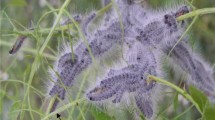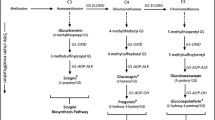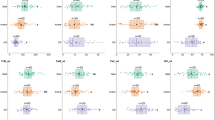Summary
We examined the capacity of the galling aphid, Pemphigus betae, to manipulate the sink-source translocation patterns of its host, narrowleaf cottonwood (Populus angustifolia). A series of 14C-labeling experiments and a biomass allocation experiment showed that P. betae galls functioned as physiologic sinks, drawing in resources from surrounding plant sources. Early gall development was dependent on aphid sinks increasing allocation from storage reserves of the stem, and later development of the progeny within the gall was dependent on resources from the galled leaf blade and from neighboring leaves. Regardless of gall position within a leaf, aphids intercepted 14C exported from the galled leaf (a non-mobilized source). However, only aphid galls at the most basal site of the leaf were strong sinks for 14C fixed in neighboring leaves (a mobilized source). Drawing resources from neighboring leaves represents active herbivore manipulation of normal host transport patterns. Neighboring leaves supplied 29% of the 14C accumulating in aphids in basal galls, while only supplying 7% to aphids in distal galls. This additional resource available to aphids in basal galls can account for the 65% increase in progeny produced in basal galls compared to galls located more distally on the leaf and limited to the galled leaf as a food resource. Developing furits also act as skins and compete with aphid-induced sinks for food supply. Aphid success in producing galls was increased 31% when surrounding female catkins were removed.
Similar content being viewed by others
References
Berenbaum M (1981) Patterns of furanocoumarin distribution and insect herbivory in the Umbelliferae: Plant chemistry and community structure. Ecology 62:1254–1266
Billett EE, Burnett JH (1978) The host parasite physiology of the maize smut fungus Ustilago maydis. Part II: Translocation of C-14 labeled assimilates in smutted maize plants. Phys Plant Pathol 12:103–112
Blescschmidt-Schneider S (1984) Conversion of mature leaves into sinks on the dicotyledonous C4 plants Amaranthus caudatus and Gomphrena globosa. Can J Bot 62:1081–1089
Conn EE (1984) Compartmentation of secondary compounds. Ann Proc Phytochemical Soc Europe 24:1–28
Cook MG, Evans LT (1983) The role of sink size and location in the partitioning of assimilates in wheat ears. Aust J Plant Physiol 10:313–327
Craig TP, Price PW, Itami JK (1986) Resource regulation by a stem-galling sawfly on the arroyo willow. Ecology 67:419–425
Dickson RE, Larson PR (1975) Incorporation of 14C-photosynthates into major chemical fractions of source and sink leaves of cottonwood. Plant Physiol 56:185–193
Dickson RE, Larson PR (1981) 14C Fixation, metabolic labeling patterns, and translocation profiles during leaf development in Populus deltoides. Planta 152:461–470
Dickson RE, Nelson EA (1982) Fixation and distribution of 14C in Populus deltoides during dormancy induction. Physiol Plant 54:393–401
Dickson RE, Vogelmann TC, Larson PR (1985) Glutamine transfer from xylem to phloem and translocation to developing leaves of Populus deltoides. Plant Phys 77:412–417
Egli DB, Guffy RD, Meckel LW, Leggett JE (1985) The effect of source-sink alterations on soybean seed growth. Ann Bot 55:395–402
Feeny P (1976) Plant apparency and chemical defense. Rec Adv Phytochem 10:1–40
Harris P (1980) Effects of Urophora affinis Frfld. and U. quadrifasciata (Meig.) (Diptera: Tephritidae) on Centaurea diffusa Lam. and C. maculosa Lam. (Compositae). Z Ang Ent 90:190–201
Hartnett DC, Bazzaz FA (1984) Leaf demography and plant-insect interactions: goldenrods and phloem-feedings aphids. Am Nat 124:137–142
Ho LC (1988) Metabolism and compartmentation of imported sugars in sink organs in relation to sink strength. Ann Rev. Plant Physiol Plant Mol Biol 39:355–378
Isebrands JG, Larson PR (1973) Anatomical changes during leaf ontogeny in Populus deltoides. Am J Bot 60:199–208
Isebrands JG, Larson PR (1977) Organization and ontogeny of the vascular system in the petiole of eastern cottonwood. Amer J Bot 64:65–77
Isebrands JG, Nelson ND (1983) Distribution of 14C-labeled photosynthates within intensively cultured Populus clones during the establishment year. Physiol Plant 59:9–18
Kearsley MJC, Whitham TG (1989) Developmental changes in resistance to herbivory: implications for individuals and populations. Ecology 70:422–434
Larew HG (1981) A comparative anatomical study of galls caused by the major cecidogenic groups, with special emphasis on the nutritive tissue. PhD thesis, Oregon State Univ., Corvallis
Larson PR, Dickson RE (1973) Distribution of imported 14C in developing leaves of eastern cottonwood according to phyllotaxy. Planta 111:95–112
Larson PR, Isebrands JG, Dickson RE (1980) Sink to source transition of Populus leaves. Ber Deutsch Bot Ges 93:79–80
Larsson S (1985) Seasonal changes in the within-crown distribution of the aphid Cinara pini on Scots pine. Oikos 35:217–222
McCrea KD, Abrahamson WG, Weis AE (1985) Goldenrod ball gall effects of Solidago altissima: 14C translocation and growth. Ecology 66:1902–1907
McKey D (1979) The distribution of secondary compounds within plants. In: Rosenthal GA, Janzen DH (eds) Herbivores: their interactions with secondary plant metabolites. Academic Press, New York, pp 56–133
Mullin GA (1986) Adaptive divergence of chewing and sucking arthropods to plant allelochemicals. In: Brattsten L, Ahmad S (eds) Molecular aspects of insect-plant associations. Plenum Press, New York, pp 175–209
Price PW, Roininen H, Tahvanainen J (1987) Why does the budgalling sawfly, Euura mucronata, attack long shoots?
Raven P (1983) Phytophages of xylem and phloem. Rec Adv Ecol 14:136–234
Rhoades DF, Cates RG (1976) Toward a general theory of plant antiherbivore chemistry. Rec Adv Phytochem 10:168–213
Rohfritsch O (1987) Different food supply strategies in midge induced plant galls. In: Labeyrie V, Fabres G, Lachaise D (eds) Insects-plants. W Junk Publishers, Dordrecht, pp 195–200
Rosenthal GA, Janzen DH (1979) Herbivores: their interactions with secondary plant metabolites. Academic Press, New York
Sharma V, Strack D (1985) Vacuolar localization of 1-sinapolyglucose: L-malate sinapolytransferase in protoplasts from cotyledons of Raphanus sativus. Planta 163:563–568
Shorthouse JD, West A, Landry RW, Thibodeau PD (1986) Structural damage by female Hemadas nubilipennis (Hymenoptera: Pteromalidae) as a factor in gall induction on lowbush blueberry. Can Ent 118:249–254
Sutton RD (1984) The effect of host plant flowering on the distribution and growth of hawthorn psyllids (Homoptera: Psylloidea). J Anim Ecol 53:37–50
Taper ML, Case TJ (1987) Interactions between oak tannins and parasite community structure: unexpected benefits of tannins to cynipid gall-wasps. Oecologia 71:254–261
Thrower SL (1974) Sink limitation and import of assimilate into mature leaves. New Phyt 73:685–687
Vogelmann TC, Larson PR, Dickson RE (1982) Translocation pathways in the petioles and stem between source and sink leaves of Populus deltoides Bartr. ex Marsh. Planta 156:345–358
Wareing PF, Patrick J (1975) Source-sink relations and the partition of assimilates in the plant. In: Cooper J (ed) Photosynthesis and productivity in different environments. Cambridge Univ Press, Cambridge, pp 481–499
Waring GL, Price PW, (1988) Consequences of host plant chemical and physical variability to an associated herbivore. Ecol Res 3:205–216
Watson MA, Casper B (1984) Morphogenetic constraints on patterns of carbon distribution in plants. Ann Rev Ecol Syst 15:233–258
Way MJ, Cammell M (1970) Aggregation behaviour in relation of food utilization by aphids. In: Watson A (ed) Animal populations in relation to their food resources, Blackwell, Oxford, pp 229–246
Weis AE (1984) Apical dominance asserted over lateral buds by the gall of Rhabdophaga strobiloides (Diptera: Cecidomyiidae). Can Ent 116:1277–1279
Weis AE, Kapelinski A (1984) Manipulation of host plant development by the gall-midge Rhabdophaga strobiloides. Ecol Ent 9:457–465
Whitham TG (1978) Habitat selection by Pemphigus aphids in response to resource limitation and competition. Ecology 59:1164–1176
Whitham TG (1986) Costs and benefits of territoriality: behavioral and reproductive release by competing aphids. Ecology 67:139–147
Williams AG, Whitham TG (1986) Premature leaf abscission; and induced plant defense against gall aphids. Ecology 67:1619–1627
Wratten SD (1974) Aggregation in the birch aphid Euceraphis punctipennis (Zett.) in relation to food quality. Anim Ecol 43:191–198
Wratten SD, Edwards DJ, Dunn I (1984) Wound induced changes in the palatability of Betula pubescens and B. pendula Oecologia 61:372–375
Wu A, Thrower LB (1981) The physiological association between Aphis craccivora Koch and Vigna sesquipedalis Fruw. New Phyt 88:89–102
Wyse RE (1986) Sinks as determinants of assimilate partitioning: possible sites for regulation. In: Cronshaw J, Lucas WJ, Giaquinta RT (eds) Phloem transport, Alan R. Liss, New York. pp 197–210
Zucker WV (1982) How aphids choose leaves: the roles of phenolics in host selection by a galling aphid. Ecology 63:972–981
Author information
Authors and Affiliations
Rights and permissions
About this article
Cite this article
Larson, K.C., Whitham, T.G. Manipulation of food resources by a gall-forming aphid: the physiology of sink-source interactions. Oecologia 88, 15–21 (1991). https://doi.org/10.1007/BF00328398
Received:
Accepted:
Issue Date:
DOI: https://doi.org/10.1007/BF00328398




